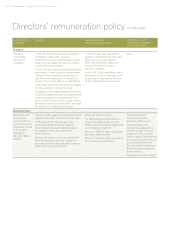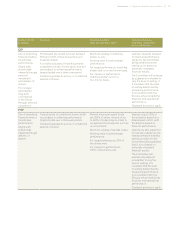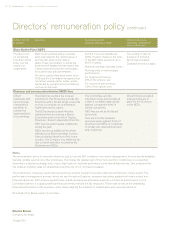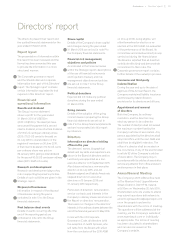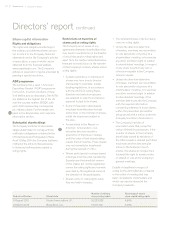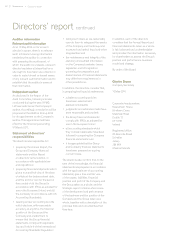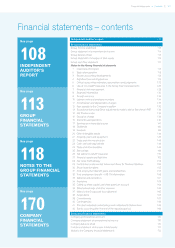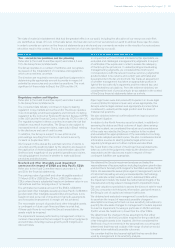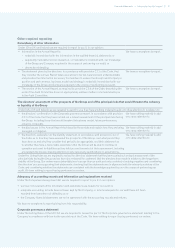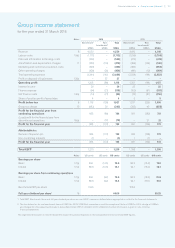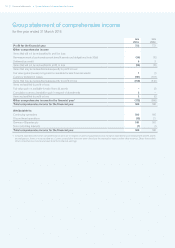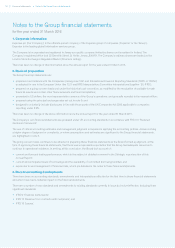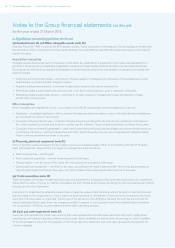Experian 2016 Annual Report Download - page 112
Download and view the complete annual report
Please find page 112 of the 2016 Experian annual report below. You can navigate through the pages in the report by either clicking on the pages listed below, or by using the keyword search tool below to find specific information within the annual report.
110
How we tailored the audit scope
We tailored the scope of our audit to ensure that we performed enough work to be able to give an opinion on the Group and
Company financial statements as a whole, taking into account the geographic structure of the Group, the accounting processes
and controls, and the industry in which the Group operates.
The Group is structured into five geographical regions, being North America, Latin America, UK and Ireland, EMEA and Asia Pacific.
Each region comprises a number of reporting units. In establishing the overall approach to the Group audit, we determined the type
of work that needed to be performed at the reporting units by us, as the Group engagement team, or component auditors within
PwC UK and from other PwC network firms operating under our instruction. We identified three reporting units that, in our view,
required an audit of their complete financial information due to their size or risk characteristics. These reporting units are all the
significant businesses within the North America region, Serasa S.A. (in the Latin American region) and Experian Limited (in the
UK and Ireland region).
The three reporting units, together with the corporate function and consolidation at the Group level, where we also conducted audit
procedures, accounted for 88% of Group revenue and 97% of Group profit before tax. In the current year, the Group engagement
team visited two of the three component audit teams and these visits involved discussing the audit approach and any issues arising
from the work, as well as meeting local management. In addition to this, the Group team attended all clearance meetings either in
person or by call. This, together with additional procedures performed at a Group level, including procedures covering consolidation,
financial statement disclosures, financial instruments, impairment, pensions, litigation and share incentive plans, gave us the
evidence that we needed for our opinion on the Group financial statements as a whole.
Materiality
The scope of our audit was influenced by our application of materiality. We set certain quantitative thresholds for materiality. These,
together with qualitative considerations, helped us to determine the scope of our audit and the nature, timing and extent of our audit
procedures on the individual financial statement line items and disclosures and in evaluating the effect of misstatements, both
individually and on the financial statements as a whole.
Based on our professional judgment, we determined materiality for the financial statements as a whole as follows:
Overall Group materiality US$51m (2015: US$50m).
How we determined it 5% of the Group’s profit before tax.
Rationale for benchmark applied We believe that the Group’s profit before tax provided us with a consistent year-on-year
basis for determining materiality and it represents the generally accepted auditing practice
benchmark for such businesses.
Component materiality For each component in our audit scope, we allocated a materiality that is less than our
overall Group materiality. The range of materiality allocated across components was between
US$12m and US$48m. Certain components were audited to a local statutory audit materiality
that was also less than our overall Group materiality.
We agreed with the Audit Committee that we would report to it misstatements identified during our audit above US$5m
(2015: US$5m) as well as misstatements below that amount that, in our view, warranted reporting for qualitative reasons.
Going concern
The directors have complied with provision C.1.3 of the UK Corporate Governance Code (‘the Code’) and provided a statement in
relation to going concern, set out in the Directors’ report.
The directors have requested that we review the statement on going concern as if the Company were a UK registered company. We
have nothing to report having performed our review.
Under ISAs (UK and Ireland) we are required to report to you if we have anything material to add or to draw attention to in relation
to the directors’ statement about whether they considered it appropriate to adopt the going concern basis in preparing the
financial statements. We have nothing material to add or to draw attention to.
As noted in the directors’ statement, the directors have concluded that it is appropriate to adopt the going concern basis in
preparing the financial statements. The going concern basis presumes that the Group and Company have adequate resources to
remain in operation, and that the directors intend them to do so, for at least one year from the date the financial statements were
signed. As part of our audit we have concluded that the directors’ use of the going concern basis is appropriate.
However, because not all future events or conditions can be predicted, these statements are not a guarantee as to the Group’s and
Company’s ability to continue as a going concern.
Independent auditor’s report
to the members of Experian plc continued
Independent auditor’s report
Financial statements •


